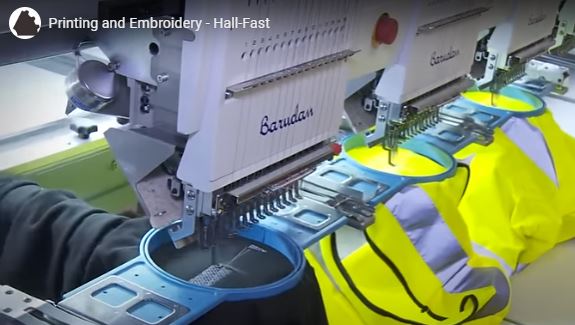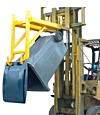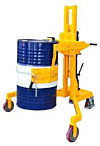
Introduction to Sustainable Workwear Excellence
Sustainable workwear represents a fundamental shift in how UK businesses approach professional clothing, moving beyond traditional cost and performance considerations to embrace environmental responsibility and circular economy principles. As organisations increasingly recognise their environmental impact and stakeholder expectations for sustainability, the demand for eco-friendly workwear solutions has grown dramatically across all industry sectors. Hall-Fast's commitment to sustainable workwear, developed over nearly 20 years since August 2006, combines environmental responsibility with the performance standards essential for professional applications, ensuring customers can achieve their sustainability objectives without compromising on quality or functionality.
The UK sustainable workwear market has evolved rapidly as businesses seek to align their operations with net-zero commitments, environmental regulations, and corporate social responsibility initiatives. Hall-Fast's extensive portfolio of approximately 200,000 standard items now includes comprehensive sustainable options from leading manufacturers such as Portwest, Blaklader, Helly Hansen, Snickers, Regatta, Fristads Kansas, Kustom Kit, Russell Corporate Wear, and Uneek, enabling businesses to make environmentally responsible choices without sacrificing performance or professional appearance.
Modern sustainable workwear encompasses innovative materials, responsible manufacturing processes, and circular design principles that minimise environmental impact throughout the product lifecycle. Hall-Fast's printing and embroidery services incorporate sustainable practices and materials, ensuring that customisation enhances rather than compromises the environmental credentials of sustainable workwear programmes.
Understanding Sustainability in Workwear
Sustainable workwear represents a holistic approach to professional clothing that considers environmental impact throughout the entire product lifecycle, from raw material sourcing through end-of-life management.
Lifecycle Assessment and Environmental Impact
Comprehensive lifecycle assessment provides the foundation for understanding and minimising the environmental impact of workwear products and programmes.
Raw Material Impact: Assessment of environmental impact begins with raw material sourcing, including consideration of agricultural practices, chemical usage, water consumption, and land use associated with natural fibres, as well as energy consumption and emissions associated with synthetic material production.
Manufacturing Processes: Manufacturing impact encompasses energy consumption, water usage, chemical emissions, and waste generation throughout textile production, garment assembly, and finishing processes that transform raw materials into finished workwear products.
Transportation and Distribution: Transportation impact includes emissions from raw material transport, finished product distribution, and end-of-life collection, representing significant opportunities for carbon footprint reduction through optimised logistics and local sourcing strategies.
Use Phase Considerations: Use phase impact includes energy consumption during washing and maintenance, chemical usage in cleaning processes, and replacement frequency that affects total environmental impact throughout the workwear lifecycle.
Circular Economy Principles
Circular economy principles guide sustainable workwear design and management, emphasising resource efficiency and waste elimination throughout the product lifecycle.
Design for Longevity: Circular design principles prioritise durability and longevity to extend product life and reduce replacement frequency, thereby minimising total environmental impact and resource consumption throughout the workwear programme lifecycle.
Material Recovery and Recycling: End-of-life material recovery enables recycling of fibres and components into new products, reducing waste and virgin material consumption while supporting circular economy objectives and environmental sustainability.
Reuse and Refurbishment: Systematic reuse and refurbishment programmes extend product life while reducing waste and environmental impact, supporting circular economy principles and cost-effective sustainability initiatives.
Biodegradability and Compostability: Selection of biodegradable materials enables safe disposal at end-of-life while reducing long-term environmental impact and supporting natural resource cycles and ecosystem health.
Carbon Footprint and Climate Impact
Understanding and reducing carbon footprint represents a critical component of sustainable workwear programmes that support climate action and net-zero commitments.
Carbon Measurement: Comprehensive carbon footprint measurement encompasses scope 1, 2, and 3 emissions throughout the workwear lifecycle, providing the foundation for reduction strategies and climate action initiatives.
Reduction Strategies: Carbon reduction strategies address energy efficiency, renewable energy adoption, transportation optimisation, and material selection to minimise climate impact while maintaining performance and quality standards.
Carbon Offsetting: Carbon offsetting programmes can address residual emissions while supporting verified environmental projects and climate action initiatives that complement direct emission reduction efforts.
Climate Resilience: Climate resilience considerations ensure workwear programmes adapt to changing environmental conditions while maintaining performance and sustainability throughout evolving climate challenges.
Sustainable Materials and Innovation
Advanced sustainable materials represent the foundation of environmentally responsible workwear, combining innovative technologies with traditional natural fibres to create high-performance, low-impact solutions.
Recycled and Recovered Materials
Recycled materials reduce virgin resource consumption while maintaining performance characteristics essential for professional workwear applications.
Recycled Polyester: Post-consumer recycled polyester manufactured from plastic bottles provides durability and performance while reducing waste and virgin resource consumption, making it ideal for technical workwear applications requiring strength and weather resistance.
Recycled Cotton: Mechanical and chemical recycling processes recover cotton fibres from textile waste, reducing agricultural impact while providing familiar comfort and breathability characteristics essential for many workwear applications.
Recycled Wool: Recycled wool fibres provide natural thermal regulation and comfort while reducing environmental impact associated with livestock farming and virgin wool production, supporting sustainable luxury workwear applications.
Ocean Plastic Recovery: Innovative programmes recover plastic waste from marine environments to create recycled polyester, addressing ocean pollution while providing high-performance materials for technical workwear applications.
Bio-Based and Natural Materials
Bio-based materials derived from renewable sources provide sustainable alternatives that support agricultural diversification and carbon sequestration.
Organic Cotton: Organic cotton cultivation eliminates pesticide and synthetic fertiliser usage while supporting soil health and biodiversity, providing comfortable, breathable workwear with reduced environmental impact.
Hemp Fibres: Hemp cultivation requires minimal water and pesticides while providing strong, durable fibres suitable for workwear applications requiring longevity and performance in challenging conditions.
Linen and Flax: Linen production utilises the entire flax plant while requiring minimal processing, providing breathable, comfortable fabrics with excellent sustainability credentials for appropriate workwear applications.
Tencel and Lyocell: Wood-based fibres produced through closed-loop processes provide silk-like comfort and performance while supporting sustainable forestry and responsible chemical management throughout production.
Innovative Sustainable Fibres
Emerging sustainable fibre technologies provide new opportunities for environmental impact reduction while maintaining or enhancing performance characteristics.
Recycled Nylon: Chemical recycling processes recover nylon from fishing nets and textile waste, providing high-performance synthetic fibres with significantly reduced environmental impact compared to virgin nylon production.
Bio-Based Polyester: Polyester production from bio-based feedstocks reduces dependence on fossil fuels while maintaining performance characteristics essential for technical workwear applications requiring durability and moisture management.
Mushroom Leather: Mycelium-based materials provide leather-like characteristics from renewable fungal sources, offering sustainable alternatives for workwear applications requiring water resistance and durability.
Algae-Based Fibres: Algae cultivation for fibre production supports carbon sequestration while providing sustainable materials with unique performance characteristics including natural antimicrobial properties.
Sustainable Manufacturing and Production
Responsible manufacturing processes represent crucial components of sustainable workwear programmes, addressing energy consumption, water usage, chemical management, and waste generation throughout production.
Clean Production Technologies
Advanced production technologies minimise environmental impact while maintaining quality and efficiency standards essential for professional workwear manufacturing.
Water Conservation: Closed-loop water systems and advanced treatment technologies minimise water consumption and eliminate contaminated discharge, reducing environmental impact while maintaining production quality and efficiency.
Energy Efficiency: Energy-efficient equipment and renewable energy adoption reduce carbon footprint while maintaining production capabilities and quality standards essential for professional workwear manufacturing.
Chemical Management: Responsible chemical selection and management eliminate harmful substances while maintaining performance characteristics and quality standards essential for professional workwear applications.
Waste Minimisation: Zero-waste manufacturing approaches minimise material waste through design optimisation and waste stream recovery, reducing environmental impact while improving resource efficiency and cost-effectiveness.
Certification and Standards
Industry certifications and standards provide verification and guidance for sustainable manufacturing practices and environmental performance.
OEKO-TEX Standards: OEKO-TEX certification verifies textile safety and environmental compliance throughout production, ensuring harmful substances are eliminated while maintaining quality and performance standards.
Global Organic Textile Standard (GOTS): GOTS certification ensures organic fibre content and environmental compliance throughout the supply chain, providing comprehensive sustainability verification for organic workwear products.
Cradle to Cradle Certification: Cradle to Cradle certification assesses material health, renewable energy usage, water stewardship, and social fairness throughout production, providing comprehensive sustainability assessment and improvement guidance.
Bluesign System: Bluesign certification ensures responsible resource usage, worker safety, and environmental protection throughout textile production, providing comprehensive sustainability verification and supply chain transparency.
Supply Chain Transparency
Transparent supply chains enable verification of sustainability claims while supporting continuous improvement and stakeholder confidence in environmental commitments.
Traceability Systems: Advanced traceability systems track materials and processes throughout the supply chain, enabling verification of sustainability claims while supporting continuous improvement and stakeholder confidence.
Supplier Assessment: Comprehensive supplier assessment programmes ensure environmental and social compliance throughout the supply chain while supporting supplier development and improvement initiatives.
Impact Reporting: Regular impact reporting provides transparency and accountability while demonstrating progress toward sustainability objectives and stakeholder commitments throughout the workwear programme.
Continuous Improvement: Systematic continuous improvement programmes address environmental performance throughout the supply chain while supporting innovation and best practice development across industry partners.
Circular Design and Product Lifecycle Management
Circular design principles optimise workwear for multiple use cycles while enabling material recovery and waste elimination throughout the product lifecycle.
Design for Durability and Longevity
Durability-focused design extends product life while reducing replacement frequency and total environmental impact throughout workwear programme lifecycles.
Material Selection: Durable material selection prioritises longevity and performance while maintaining comfort and appearance throughout extended use periods, reducing replacement frequency and environmental impact.
Construction Quality: High-quality construction techniques ensure structural integrity and appearance retention throughout demanding use conditions, extending product life while maintaining professional standards and user satisfaction.
Repairability: Design for repairability enables maintenance and repair throughout the product lifecycle, extending useful life while reducing waste and replacement costs for sustainable workwear programmes.
Timeless Design: Timeless design approaches avoid fashion trends while maintaining professional appearance, reducing premature replacement and supporting long-term sustainability objectives.
Modular and Adaptable Systems
Modular design enables customisation and adaptation while supporting multiple use scenarios and extending product utility throughout changing requirements.
Layering Systems: Modular layering systems enable adaptation to changing conditions while reducing total garment requirements and supporting versatile sustainable workwear programmes across diverse applications.
Interchangeable Components: Interchangeable components enable customisation and replacement of specific elements while extending overall product life and reducing waste throughout the workwear programme lifecycle.
Size Adjustment: Adjustable sizing systems accommodate body changes and multiple users while extending product utility and reducing replacement requirements throughout sustainable workwear programmes.
Function Adaptation: Adaptable function systems enable repurposing for different applications while extending product utility and supporting circular economy principles throughout workwear lifecycle management.
End-of-Life Planning
Comprehensive end-of-life planning ensures responsible disposal and material recovery while supporting circular economy objectives and environmental sustainability.
Material Recovery: Systematic material recovery programmes enable recycling and reuse while reducing waste and supporting circular economy principles throughout sustainable workwear programme management.
Take-Back Programmes: Manufacturer take-back programmes ensure responsible end-of-life management while supporting material recovery and circular economy objectives for sustainable workwear initiatives.
Biodegradable Options: Biodegradable material selection enables safe disposal through composting while reducing long-term environmental impact and supporting natural resource cycles.
Recycling Infrastructure: Collaboration with recycling infrastructure providers ensures effective material recovery while supporting circular economy development and environmental sustainability objectives.
Industry-Specific Sustainable Solutions
Sustainable workwear solutions must address the specific requirements of different industries while maintaining environmental credentials and performance standards.
Construction and Industrial Sustainability
Construction and industrial environments require sustainable workwear solutions that address demanding conditions while maintaining environmental responsibility and safety compliance.
Durable Sustainable Materials: Construction-grade sustainable materials provide protection and longevity while reducing environmental impact, supporting both safety requirements and sustainability objectives in demanding industrial applications.
Safety Compliance Integration: Sustainable workwear maintains safety certifications and protective properties while incorporating environmental responsibility, ensuring worker protection without compromising sustainability commitments.
High-Visibility Sustainability: Sustainable high-visibility workwear combines safety compliance with environmental responsibility, supporting both worker protection and corporate sustainability objectives in construction applications.
Multi-Hazard Sustainability: Sustainable multi-hazard protection integrates environmental responsibility with comprehensive safety features, supporting complex industrial applications while maintaining sustainability credentials.
Healthcare Sustainable Solutions
Healthcare environments require sustainable workwear solutions that address hygiene requirements while supporting environmental responsibility and infection control protocols.
Antimicrobial Sustainability: Sustainable antimicrobial treatments provide hygiene protection while supporting environmental responsibility, ensuring infection control without compromising sustainability objectives in healthcare applications.
Hygienic Sustainability: Sustainable materials and treatments maintain hygiene standards while reducing environmental impact, supporting both patient safety and environmental responsibility in healthcare environments.
Comfort and Performance: Sustainable healthcare workwear provides comfort and performance while maintaining environmental credentials, supporting healthcare worker satisfaction and environmental responsibility objectives.
Professional Appearance: Sustainable healthcare workwear maintains professional appearance while supporting environmental objectives, ensuring patient confidence and environmental responsibility in medical environments.
Corporate Sustainable Workwear
Corporate environments require sustainable workwear solutions that project professionalism while demonstrating environmental responsibility and corporate values.
Executive Sustainability: Premium sustainable workwear maintains executive quality while demonstrating environmental leadership, supporting both professional requirements and corporate sustainability commitments.
Brand Alignment: Sustainable corporate workwear aligns with brand values while maintaining professional standards, supporting both corporate image and environmental responsibility objectives.
Cost-Effective Sustainability: Sustainable corporate workwear provides cost-effective solutions while maintaining quality and environmental credentials, supporting both financial and environmental objectives.
Professional Standards: Sustainable corporate workwear maintains professional appearance while supporting environmental responsibility, ensuring both business requirements and sustainability objectives are achieved.
Sustainable Customisation and Branding
Hall-Fast's sustainable printing and embroidery services ensure that customisation enhances rather than compromises the environmental credentials of sustainable workwear programmes.
Eco-Friendly Customisation Materials
Sustainable customisation utilises environmentally responsible materials and processes while maintaining quality and durability standards.
Water-Based Inks: Eco-friendly water-based inks eliminate harmful solvents while providing excellent colour quality and durability, supporting both environmental responsibility and professional appearance requirements.
Organic Thread Options: Organic embroidery threads provide sustainable customisation while maintaining quality and appearance, supporting environmental objectives without compromising professional standards or durability.
Recycled Materials: Customisation materials manufactured from recycled content reduce environmental impact while maintaining performance characteristics essential for professional workwear applications.
Biodegradable Options: Biodegradable customisation materials support end-of-life disposal while maintaining quality throughout the garment lifecycle, supporting circular economy objectives and environmental responsibility.
Sustainable Customisation Processes
Environmentally responsible customisation processes minimise environmental impact while maintaining quality and efficiency standards.
Energy Efficiency: Energy-efficient customisation equipment reduces carbon footprint while maintaining production capabilities and quality standards essential for professional workwear customisation.
Waste Minimisation: Customisation processes optimised for waste minimisation reduce environmental impact while maintaining efficiency and quality throughout sustainable workwear production.
Chemical Reduction: Sustainable customisation processes minimise chemical usage while maintaining quality and durability standards essential for professional workwear applications.
Resource Efficiency: Resource-efficient customisation processes optimise material usage while reducing environmental impact and maintaining cost-effectiveness throughout sustainable workwear programmes.
Brand Integration and Sustainability Communication
Sustainable customisation enables effective communication of environmental commitments while maintaining professional brand representation and corporate identity.
Sustainability Messaging: Customisation can incorporate sustainability messaging while maintaining professional appearance, supporting both brand communication and environmental awareness objectives.
Environmental Credentials: Customised workwear can communicate environmental credentials while maintaining professional standards, supporting both corporate image and sustainability objectives.
Stakeholder Engagement: Sustainable customisation supports stakeholder engagement while maintaining professional requirements, enabling effective communication of environmental commitments and corporate values.
Leadership Demonstration: Sustainable customised workwear demonstrates environmental leadership while maintaining professional standards, supporting both corporate image and sustainability objectives.
Cost-Effectiveness and Business Benefits
Sustainable workwear provides significant business benefits beyond environmental impact reduction, including cost savings, risk mitigation, and competitive advantages.
Total Cost of Ownership Benefits
Sustainable workwear often provides superior total cost of ownership through improved durability, reduced replacement frequency, and operational efficiencies.
Extended Product Life: Durable sustainable workwear reduces replacement frequency while maintaining performance standards, providing cost savings and environmental benefits throughout the programme lifecycle.
Maintenance Efficiency: Sustainable materials often require less intensive maintenance while maintaining appearance and performance, reducing operational costs and environmental impact throughout workwear use.
Energy Savings: Sustainable materials may require less energy for care and maintenance while maintaining quality standards, providing cost savings and environmental benefits throughout the workwear lifecycle.
Waste Reduction: Sustainable workwear programmes reduce waste generation while providing cost savings through reduced disposal costs and material efficiency throughout programme management.
Risk Mitigation and Compliance
Sustainable workwear programmes provide risk mitigation benefits while supporting regulatory compliance and stakeholder expectations.
Regulatory Compliance: Sustainable workwear supports compliance with environmental regulations while reducing regulatory risk and supporting corporate responsibility objectives.
Supply Chain Resilience: Sustainable supply chains often provide greater resilience while reducing operational risk and supporting business continuity objectives.
Reputation Protection: Sustainable workwear programmes protect corporate reputation while supporting stakeholder confidence and brand value throughout corporate communications and market positioning.
Future-Proofing: Sustainable practices provide protection against future regulatory changes while supporting long-term business sustainability and competitive positioning.
Competitive Advantages
Sustainable workwear programmes provide competitive advantages while supporting market differentiation and business growth opportunities.
Market Differentiation: Sustainable workwear enables market differentiation while supporting competitive positioning and customer attraction in environmentally conscious markets.
Stakeholder Attraction: Sustainable practices attract environmentally conscious stakeholders while supporting recruitment, retention, and business development objectives.
Innovation Leadership: Sustainable workwear programmes demonstrate innovation leadership while supporting corporate image and market positioning in evolving business environments.
Partnership Opportunities: Sustainable practices enable partnership opportunities while supporting business development and collaborative initiatives with environmentally conscious organisations.
Implementation and Change Management
Successful sustainable workwear programmes require careful implementation and change management to ensure acceptance and optimal results.
Programme Development and Planning
Comprehensive programme development ensures sustainable workwear initiatives align with business objectives while achieving environmental goals and stakeholder expectations.
Sustainability Assessment: Initial sustainability assessment identifies opportunities and challenges while establishing baselines and targets for sustainable workwear programme development and implementation.
Stakeholder Engagement: Comprehensive stakeholder engagement ensures support and participation while addressing concerns and incorporating feedback throughout sustainable workwear programme development.
Cost-Benefit Analysis: Detailed cost-benefit analysis demonstrates value while supporting investment decisions and programme approval for sustainable workwear initiatives.
Implementation Planning: Systematic implementation planning ensures successful programme rollout while minimising disruption and maximising benefits throughout sustainable workwear adoption.
Communication and Training
Effective communication and training ensure understanding and support while maximising the benefits of sustainable workwear programmes.
Sustainability Education: Comprehensive sustainability education builds understanding while supporting behaviour change and programme participation throughout the organisation.
Benefit Communication: Clear communication of programme benefits builds support while demonstrating value and encouraging participation in sustainable workwear initiatives.
Care and Maintenance Training: Training on proper care and maintenance extends product life while maximising sustainability benefits and cost-effectiveness throughout workwear use.
Performance Monitoring: Regular performance monitoring demonstrates results while supporting continuous improvement and stakeholder confidence in sustainable workwear programmes.
Continuous Improvement
Systematic continuous improvement ensures sustainable workwear programmes evolve while maintaining effectiveness and supporting advancing sustainability objectives.
Performance Measurement: Comprehensive performance measurement tracks progress while identifying improvement opportunities and demonstrating value throughout sustainable workwear programme management.
Stakeholder Feedback: Regular stakeholder feedback enables programme refinement while ensuring continued relevance and effectiveness throughout sustainable workwear implementation.
Technology Integration: Integration of new technologies enhances programme effectiveness while supporting advancing sustainability objectives and competitive positioning.
Best Practice Development: Development and sharing of best practices supports programme improvement while contributing to industry advancement and sustainability leadership.
Hall-Fast's Sustainability Leadership
Hall-Fast's nearly 20 years of experience in workwear has developed comprehensive sustainability expertise that benefits customers seeking environmentally responsible solutions.
Environmental Commitment
Deep environmental commitment guides Hall-Fast's sustainable workwear initiatives while supporting customer sustainability objectives and environmental responsibility.
Sustainability Integration: Sustainability principles are integrated throughout Hall-Fast's operations while supporting customer environmental objectives and corporate responsibility initiatives.
Innovation Support: Active support for sustainability innovation enables access to emerging technologies while supporting advancing environmental objectives and competitive positioning.
Partnership Development: Strategic partnerships with sustainable suppliers enable access to environmentally responsible products while supporting supply chain sustainability and continuous improvement.
Knowledge Sharing: Active knowledge sharing supports industry advancement while contributing to sustainability leadership and best practice development throughout the workwear sector.
Customer Support
Comprehensive customer support ensures successful sustainable workwear implementation while maximising environmental benefits and business value.
Consultation Services: Expert consultation services guide sustainable workwear selection while ensuring alignment with environmental objectives and business requirements.
Programme Development: Custom programme development addresses specific sustainability requirements while supporting business objectives and environmental commitments.
Training and Support: Comprehensive training and support ensure programme success while maximising benefits and supporting long-term sustainability objectives.
Performance Monitoring: Ongoing performance monitoring tracks results while supporting continuous improvement and demonstrating value throughout sustainable workwear programmes.
International Recognition and Awards
Hall-Fast's commitment to sustainability and business excellence has contributed to their recognition through numerous international awards for business excellence and international trade, reflecting their leadership in sustainable business practices.
The company's international success demonstrates their ability to meet diverse sustainability requirements while maintaining the highest standards of quality and environmental responsibility.
Community Engagement and Environmental Stewardship
As a family business committed to community engagement, Hall-Fast actively supports environmental stewardship and recognises the importance of sustainable practices in supporting community prosperity and environmental health.
Community activities include support for environmental education, sustainability initiatives, and circular economy development that benefit the broader community and environmental protection objectives.
Future Developments in Sustainable Workwear
The sustainable workwear industry continues to evolve rapidly, driven by technological innovation, regulatory development, and advancing environmental consciousness. Hall-Fast remains at the forefront of these developments.
Material Innovation
Advanced sustainable materials continue to enhance environmental performance while maintaining the functionality essential for professional workwear applications.
Bio-Based Technologies: Emerging bio-based materials provide enhanced sustainability while maintaining performance characteristics essential for demanding workwear applications.
Circular Materials: Advanced circular materials enable multiple use cycles while supporting material recovery and waste elimination throughout sustainable workwear lifecycles.
Performance Enhancement: Sustainable materials with enhanced performance characteristics provide superior functionality while maintaining environmental credentials essential for professional applications.
Cost Reduction: Technological advancement reduces sustainable material costs while improving accessibility and supporting widespread adoption throughout the workwear industry.
Circular Economy Advancement
Advancing circular economy systems provide enhanced opportunities for waste elimination and resource efficiency throughout sustainable workwear programmes.
Infrastructure Development: Expanding recycling and recovery infrastructure enables effective material recovery while supporting circular economy principles and environmental objectives.
System Integration: Integrated circular systems enable seamless material flow while supporting efficiency and environmental objectives throughout sustainable workwear lifecycles.
Technology Enhancement: Advanced technologies improve material recovery and processing while supporting circular economy effectiveness and environmental performance.
Collaboration Expansion: Expanding collaboration between industry participants enhances circular economy effectiveness while supporting shared sustainability objectives and environmental responsibility.
Regulatory Evolution
Evolving environmental regulations continue to influence sustainable workwear requirements while supporting advancing environmental objectives and corporate responsibility.
Extended Producer Responsibility: Expanding producer responsibility requirements support circular economy development while encouraging sustainable design and end-of-life management throughout workwear industries.
Carbon Regulation: Advancing carbon regulations influence material selection and manufacturing processes while supporting climate objectives and environmental responsibility.
Chemical Restrictions: Evolving chemical regulations eliminate harmful substances while supporting environmental protection and worker safety throughout sustainable workwear production.
Transparency Requirements: Increasing transparency requirements support stakeholder confidence while encouraging continuous improvement and environmental accountability throughout sustainable workwear programmes.
Conclusion
Sustainable workwear represents a fundamental transformation in how UK businesses approach professional clothing, combining environmental responsibility with the performance standards essential for business success. Hall-Fast's comprehensive sustainable workwear solutions, developed through nearly 20 years of experience and partnerships with leading manufacturers, provide businesses with the tools needed to achieve their environmental objectives while maintaining professional standards and operational efficiency.
The combination of innovative sustainable materials, responsible manufacturing processes, circular design principles, and expert guidance ensures Hall-Fast provides superior sustainable workwear solutions that meet demanding business requirements while supporting environmental responsibility and stakeholder expectations.
Hall-Fast's commitment to sustainability leadership, continuous innovation, and customer support ensures their sustainable workwear solutions remain at the forefront of environmental advancement while addressing evolving business requirements and environmental challenges.
For businesses seeking comprehensive sustainable workwear solutions that combine environmental responsibility with professional excellence, Hall-Fast offers the expertise, products, and services needed for successful sustainability initiatives. Their motto "Whatever Your Industry Needs Worldwide" reflects their commitment to providing complete sustainable workwear solutions across all industry applications.
To explore Hall-Fast's comprehensive sustainable workwear options, visit their workwear section or learn more about their sustainable customisation services. For specific enquiries about sustainable workwear requirements, contact their expert team through the contact page or discover more about their environmental commitment on their about page.
Hall-Fast's comprehensive brand portfolio includes sustainable options from leading manufacturers including Portwest, Blaklader, Helly Hansen, Snickers, Regatta, Fristads Kansas, Kustom Kit, Russell Corporate Wear, and Uneek, ensuring businesses receive optimal sustainable workwear solutions for their specific environmental and operational requirements.












